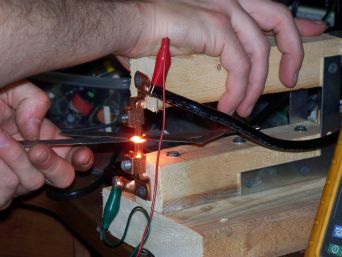[youtube=http://www.youtube.com/watch?v=7vYKwih8Izk]
Reader, [Ben Godding], sends in the video for his senior design team’s automated paintball sentry. The frame is made of plasma cut aluminum. The paintball gun uses a custom hopper mounted remotely from the gun body. It has two webcams offering a 160 degree field of vision, and the image processing is done by a dual core pentium CPU booting windows xp off a compact flash card. The computer interfaces with the 1/4scale RC servos using a PIC24. The paintball sentry can either be configured via a computer GUI when a monitor is available or a baclkit keypad and 4×20 charachter display in the field.
Related: [Jared Bouck]’s paintball gun turret
















